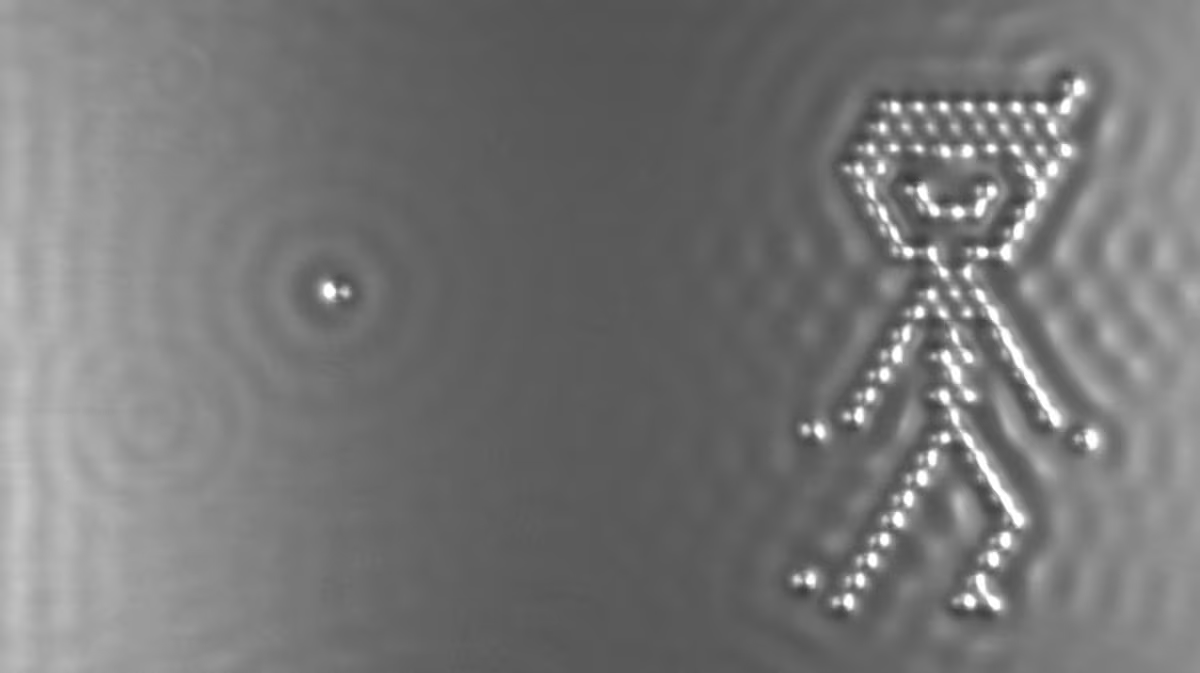
This question has a problem because, in its formulation, it seems that the atoms of the crystal are considered empty but not those of water. That is, a distinction is made between atoms depending on whether they are made up of solid matter – crystal – or liquid matter – water. And in reality we cannot make this distinction: all atoms of matter have the same basic characteristics, even if the different substances that make up those atoms have different properties: water as a liquid can deform and glass as a solid cannot.
But having said that, the interesting point of the question is to investigate whether atoms are empty or not. And the answer is that they are not exactly empty because there is the probability of the presence of one or more electrons around the nucleus of each atom. And those electrons create a quantum electromagnetic field. This electromagnetic field is responsible for the repulsions or attractions between atoms, which means that there are barriers between them, even between those of water, because barriers exist in all types of matter. To answer why water doesn’t flow out of the glass that holds it, I have to refer to those electrons in atoms and the repulsions and attractions between them.
So, to begin with, the state of atoms cannot be interpreted as empty due to the presence of those electrons that create quantum electromagnetic fields. This means that if an electron from a water atom wants to position itself where the electrons from the crystal that glass is made of are, it can’t do so. This is the Pauli solution, or Pauli exclusion principle, which tells us that there is a fixed number of electrons in each energy state, you can’t have as many electrons as you want where you want.
From the point of view of classical physics, we have this repulsion and attraction. We already know that particles with the same charge repel each other and those with different charges attract each other. Since the electrons all have a negative charge, they repel each other; but they are attracted to positively charged particles. The water adheres to the glass but is also cohesive with each other, and this is due to these repulsions and attractions. It happens like during adolescence, when girls and boys have an attachment to home and family but also begin to have an attachment to the outside world and to groups of friends.
But in addition we must have the quantum vision, the physics that works with microscopic systems, which tells us that it is not possible to have two electrons in the same state. So, if the crystal atom already has the full positions for its electrons, a water atom cannot fit into it, and this prevents water atoms from passing through the crystal.
Ruth LazkozShe is a doctor in physics, professor at the University of the Basque Country.
Coordination and writing:Vittoria Toro.
Question sent via email fromCarlos Miguel Vega Gomez.
Scientists respondis a weekly scientific consultation, sponsored by the programL’Oréal-UNESCO ‘For women in science’and forBristol Myers Squibbwhich answers readers’ questions about science and technology. They are scientists and technologists, partners ofAMIT(Association of Women Researchers and Technologists), those who answer these questions. Send your questions to arespondemos@gmail.comor via X #werespond.







